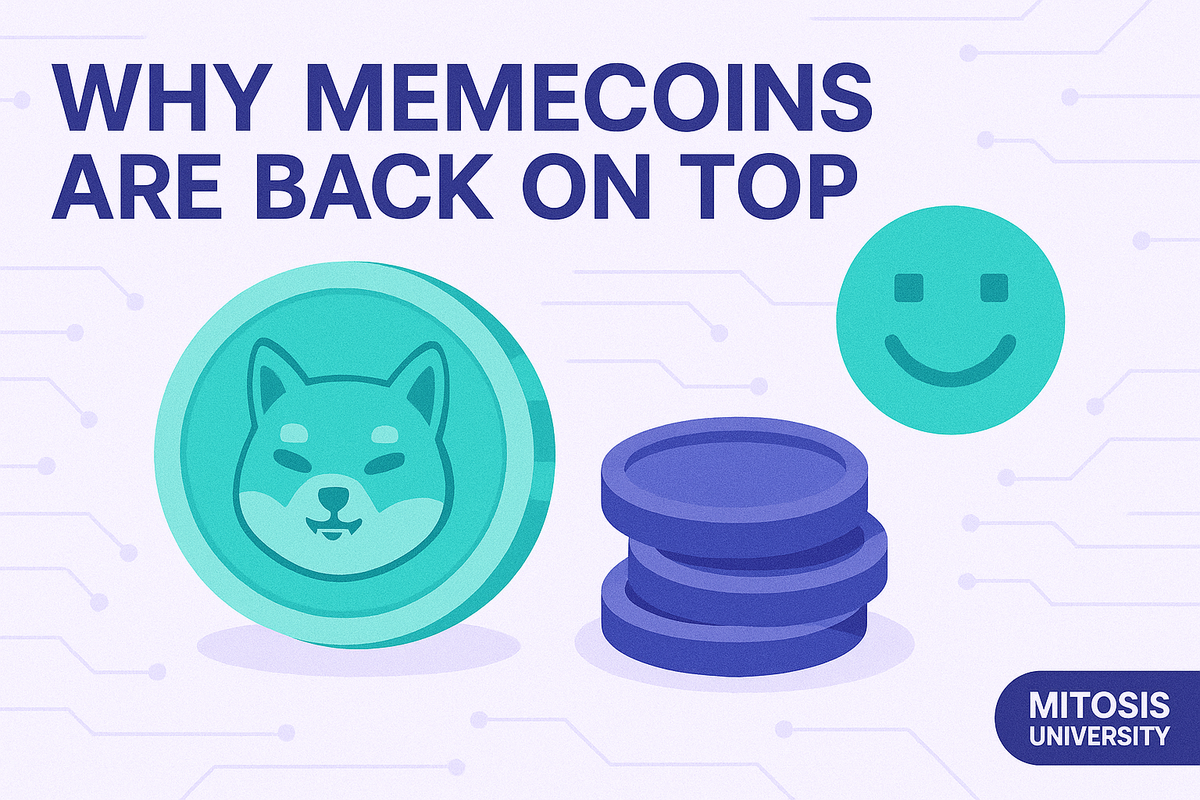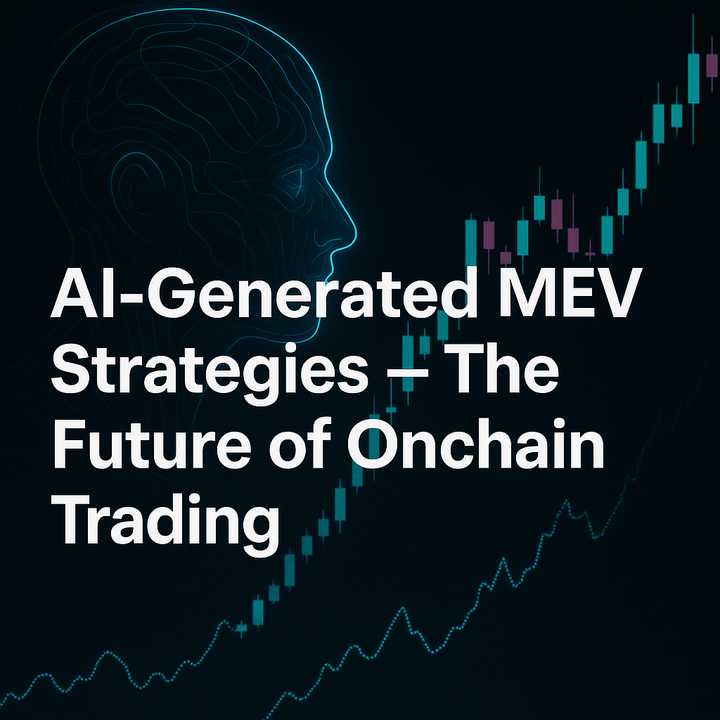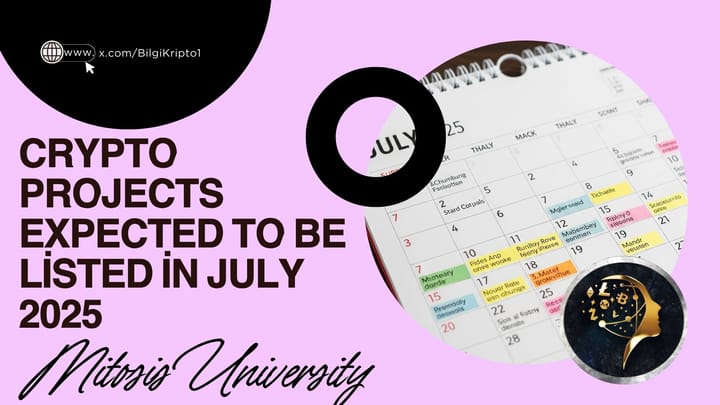Why Memecoins Are Back on Top: Culture, Hype, and High-Risk Speculation in 2025

What if internet jokes became billion-dollar assets? In 2025, that's no longer a hypothetical—it’s the memecoin market. Once dismissed as unserious by much of the financial world, memecoins like Dogecoin and Shiba Inu are not only surviving but thriving. And they’re being joined by a fresh wave of newcomers like Pepe Coin, Brett, and dogwifhat.
Today, memecoins boast a collective market cap exceeding $70 billion, with projections suggesting they could surpass $900 billion by 2035. But this isn't just about market numbers—it’s about the merging of internet culture, community identity, and financial speculation.
In this article, we explore three major themes driving the memecoin phenomenon: the market and technological factors fueling its growth, the cultural and psychological dynamics behind its popularity, and the investment risks every trader needs to understand.
Memecoins on the Rise: What’s Fueling the 2025 Boom?
A Perfect Storm of Technology, Social Media, and Retail Energy
Memecoins have surged in part because of their deep synergy with today’s internet. Social media platforms like X, TikTok, and Reddit serve as instant amplifiers, turning a funny token name into a trending asset overnight. This virality, paired with blockchain infrastructure that supports fast and cheap transactions (notably Solana and Base), creates the ideal environment for explosive growth.
Retail investors, drawn in by low token prices and high potential gains, are once again at the center of this boom. The "buy millions of tokens for a few dollars" effect lowers psychological barriers to entry. And as Bitcoin and the broader market recover, memecoins—historically bull-market beneficiaries—are riding the wave.
A few numbers to highlight the scope:
- Market Cap: $71.88 billion as of May 2025
- Trading Volume: Memecoins accounted for 15% of global crypto volume in Q1 2025
- Token Creation: Over 65,000 new memecoins launched daily on Solana in early 2025
The accessibility and speed of these networks don’t just facilitate speculation—they enable a cultural wildfire.
New Faces and Evolving Utility
While Dogecoin and Shiba Inu remain pillars of the space, new entrants are commanding attention:
- Pepe Coin (PEPE): An ERC-20 token with extreme volatility, a $4.2B market cap, and huge cultural traction despite recent corrections.
- dogwifhat (WIF): A Solana token that surged 66% in a single month, now with a $1.1B market cap—powered entirely by meme appeal.
- Brett and Toshi: Both on Base, these coins reflect growing developer interest in Coinbase-backed infrastructure.
- Little Pepe: A new contender building its own Ethereum-compatible Layer 2 chain for meme tokens—an early signal that memecoins might be evolving beyond the joke.
Projects like Shiba Inu and Little Pepe are adding real-world infrastructure (Layer 2 chains, DEXs, metaverse integrations), suggesting that a few memecoins could pivot toward utility, while the broader sector remains driven by attention and emotion.
Beyond the Meme: The Psychology and Culture Powering Memecoin Mania
Community, Identity, and the Digital Tribe
For many, buying a memecoin isn’t just a financial decision—it’s a way to belong.
Memecoins foster highly engaged communities that operate more like fandoms than investor groups. Telegram groups, Discord servers, and Twitter threads are filled with inside jokes, memes, and campaign slogans. The sense of being “early” or “in on the joke” is intoxicating—and that emotional connection can fuel loyalty far beyond price charts.
Some tokens even start with community first, building meme culture before launching tech or products. In this sense, memecoins double as identity tokens and digital social clubs.
Gamified Speculation and the FOMO Engine
The memecoin market thrives on gamification. Buying early, watching your portfolio double overnight, winning airdrops, or engaging in meme contests—these create dopamine loops similar to gambling.
And then there’s FOMO. Social proof—seeing others profit or hype a coin—drives impulsive investing. A surge in posts about a coin like Little Pepe, for example, led to a presale that raised millions. The game-like, instant nature of trading on platforms like Solana and Base lowers the barrier even further.
This environment is ripe for both opportunity and exploitation.
More Than a Joke: Cultural Commentary and Internet Movements
Memecoins have become digital vehicles for satire, protest, and community commentary. Some mock government overreach, others parody political candidates. Coins like $Trump, $CAR, and $LIBRA gained traction by associating with real-world political figures—though often with extreme volatility and accusations of manipulation.
This speaks to a deeper trend: memecoins as cultural tokens, not just financial ones. They’re efficient vehicles for capturing attention in an age of information overload, where memes often outperform headlines.
Investing in Memecoins: High Risk, High Reward, or Just Hype?
Volatility and Vapor: The Core Risks
Memecoins are, by nature, high-risk. Many have no roadmap, no utility, and rely entirely on sentiment and visibility. Price swings of 50% or more within days are common.
Add to this a lack of intrinsic value, and most projects fade after one bull cycle. Like musical chairs, timing is everything—most investors don’t exit with a profit.
In terms of fundamentals, memecoins often:
- Lack defined product utility
- Rely heavily on influencer hype
- Offer minimal transparency on tokenomics
- Trade in highly illiquid environments
This has led to comparisons with gambling more than investing.
Scams, Rug Pulls, and Regulatory Gaps
Pump-and-dump schemes and rug pulls remain prevalent. In 2025 alone, estimated losses from scam tokens have surpassed $6 billion. Some high-profile examples include:
- $JPROOF: Where insiders allegedly misrepresented locked liquidity and manipulated supply.
- SQUID (2021): A now-famous rug pull that left buyers with worthless tokens after a massive pump.
Adding to the chaos is the lack of regulatory protection. Since memecoins often don’t qualify as securities, investors lack legal recourse. This regulatory vacuum allows creators to act with near-impunity.
Survival Tips: How to Engage Responsibly
If you're tempted to jump in, here are practical strategies:
- DYOR (Do Your Own Research): Vet the team, roadmap, token distribution, and community.
- Evaluate Tokenomics: Beware of massive insider allocations or unclear liquidity locks.
- Diversify: Never go all-in. Pair memecoins with more stable assets.
- Use Stop-Losses: Protect yourself from sudden crashes.
- Avoid FOMO-Driven Decisions: If everyone’s talking about it, you might already be late.
Ultimately, treat memecoins like a casino bet: never invest more than you're willing to lose.
Conclusion
Memecoins are more than a crypto fad—they're a cultural and financial phenomenon that reflect the values of internet-native generations: humor, community, rebellion, and speed. They turn attention into value and memes into markets.
But with that power comes risk. Most memecoins remain highly speculative, vulnerable to scams, and devoid of traditional fundamentals. While some projects like Little Pepe hint at a path toward utility, the majority will likely remain tools for speculation and social engagement rather than technological innovation.
Key Takeaways
- Cultural Virality is now a form of market capitalization.
- Infrastructure Matters: Solana and Base are enabling memecoin scalability.
- High Engagement = High Risk: Strong communities can amplify both gains and losses.
- Regulatory Gaps Persist: The burden of protection is on the investor.
Final Thought
As the line between internet culture and financial markets continues to blur, memecoins raise a provocative question: In a digital economy, is hype itself the new value?



Comments ()